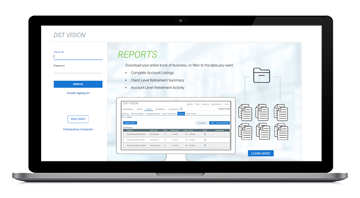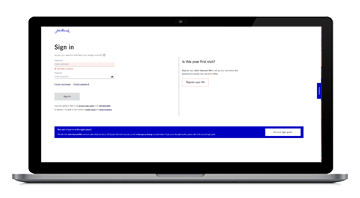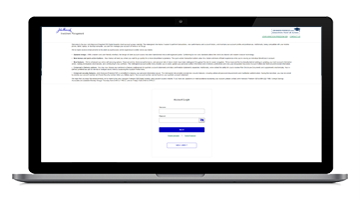Investing in gold: precious portfolio diversifier or just dead weight?
After an extended period of price weakness, gold has staged a striking comeback, prompting many investors to reassess its potential merits as a return generator and a portfolio diversifier.

Relative to most investments, gold is a bit of an outlier. Investing in gold generates no yield and lays no claim on corporate profits. Moreover, unlike other commodities, gold can't feed the population or meet major industrial needs in the real economy. Instead, gold's practical uses are more limited—“primarily for melting into cuff links and charm bracelets,” as one writer puts it.1
Adding to the list of idiosyncrasies, the drivers of gold prices tend to vary over time, falling in and out of step with drivers of traditional financial asset prices along the way. Gold's price drivers can range from abrupt changes in market sentiment and inflation surprises to currency devaluation concerns and supply-and-demand imbalances.
As a finite and precious resource that's served as a means of exchange and a store of wealth throughout much of human history, gold is frequently perceived as a safe haven for investors during periods of political or economic turbulence; however, until recently, it hasn't been a particularly convenient investment to hold.
Investing in gold today isn't limited to the commodity
Jewelry and coin collecting aside, investing in gold during the old days meant taking possession of the commodity and storing it safely. Of course, buying physical bars is still a possibility, but the logistical hassles and storage costs deter many investors from pursuing this route now that there are more expedient ways of investing in gold.
Nowadays, gold exposure can be introduced into a portfolio of diversified investments more easily thanks to a readily available range of gold-themed market instruments, such as exchange-traded funds directly tracking the price of bullion, open-end mutual funds specializing in the precious metals industry, and listed shares of gold mining companies.

Don't rely on gold as a steady return generator
While gold's greater accessibility to the average investor is good news, it shouldn't be interpreted as an invitation to overindulge in what is, after all, a zero-yielding asset. Gold has had an impressive run in 2016 so far, but that pace of price appreciation is unsustainable, even for an asset that's experienced rising population-induced demand growth and positive inflation-adjusted returns over extended time periods. Although gold tends to hold up relatively well when the U.S. dollar weakens and during capital flights to safety, the price of gold is exceedingly difficult to forecast, in part because of the changing and eclectic mix of drivers and technical factors at play.
Furthermore, despite its reputation for wealth preservation over time, gold can be immensely volatile from one day to the next; shares of gold mining companies tend to move up and down even more erratically. Investing in gold is done best when it's done in moderation. Size your allocation carefully, and don't count on this precious metal to power your portfolio into perpetuity.
Diversification potential is the primary rationale for investing in gold today
Corporate earnings growth, which tends to track GDP growth in the long run, drives the price performance of the stock market, so approaching portfolio construction with a share ownership bias serves as a sound basis for most investors seeking capital appreciation over time: Emphasize diversified investments across the world's equity asset classes as the foundation for your portfolio's growth engine. Balance those equity allocations with a liberal dose of income-generating bond sectors and a splash of stabilizing cash. That may be enough for some investors.
However, a little gold may go a long way toward improving portfolio diversification. As an alternative to traditional asset classes, gold's chief virtue lies in its status as an outlier: It doesn't behave like equity, debt, or cash. Investing in gold can enhance your portfolio rebalancing tool kit. For investors who've established a baseline target asset allocation, bringing that target portfolio allocation back in line regularly as different asset classes move by different magnitudes or in different directions enforces the discipline of buying low and selling high. All else being equal, this works best for portfolios holding more, rather than fewer, types of assets that behave unlike the others.
In an environment where cash generates no income, bond yields remain low, and equity valuations have drifted to the high side of normal, such precious portfolio construction tools are most welcome.
1 The Devil's Financial Dictionary, Jason Zweig, 2015.
Important disclosures
Important disclosures
The S&P 500 Index tracks the performance of 500 of the largest publicly traded companies in the United States. It is not possible to invest directly in an index. Past performance does not guarantee future results.
The fund's performance depends on the advisor's skill in determining asset class allocations, the mix of underlying funds, and the performance of those underlying funds. The fund is subject to the same risks as the underlying funds and exchange-traded funds in which it invests: Stocks and bonds can decline due to adverse issuer, market, regulatory, or economic developments; foreign investing, especially in emerging markets, has additional risks, such as currency and market volatility and political and social instability; the securities of small companies are subject to higher volatility than those of larger, more established companies; and high-yield bonds are subject to additional risks, such as increased risk of default. Liquidity—the extent to which a security may be sold or a derivative position closed without negatively affecting its market value, if at all—may be impaired by reduced trading volume, heightened volatility, rising interest rates, and other market conditions. Currency transactions are affected by fluctuations in exchange rates. The fund's losses could exceed the amount invested in its currency instruments. Precious metal and commodity investments can be volatile and are affected by speculation, supply-and-demand dynamics, geopolitical stability, and other factors. Please see the fund's prospectus for additional risks.
MF292177






